Terowie is a small town in the mid-north of South Australia located 220 kilometres North of
Adelaide. It is located in the Regional Council of Goyder.
Terowie retains a number of authentic and
well preserved 1880s buildings, and has been declared a "historic town". It also remains a town of interest to those interested in rail history. Although now a very small town with few facilities,
Terowie remains a popular destination for photographers, historians, and rail buffs. At the 2006 census,
Terowie had a
population of 145
Prior to the 1870s the
Terowie name was practically unknown to European settlers. The entire district was an extensive pastoral property named Gottlieb's
Well Station first taken up in the 1840s under Occupation Licence, and then from 1851 under Crown Lease. By the 1860s, under leaseholder Alexander McCulloch, this run had expanded to a total area of 407 square
miles, grazing 40,000 sheep. The busy Gottliebs
Well head station, which also catered for travellers and stagecoaches, was just a few kilometres southwest of present
Terowie township. From the early 1870s many large pastoral properties of South Australia were broken up into smaller parcels through land reform. In the case of Gottliebs
Well, this resulted in the proclamation of the Hundred of
Terowie. Thus obscured, the Gottliebs
Well name was consigned to further obscurity in 1918 when, due to anti-German sentiment of World War I, it was renamed Parnggi
Well.
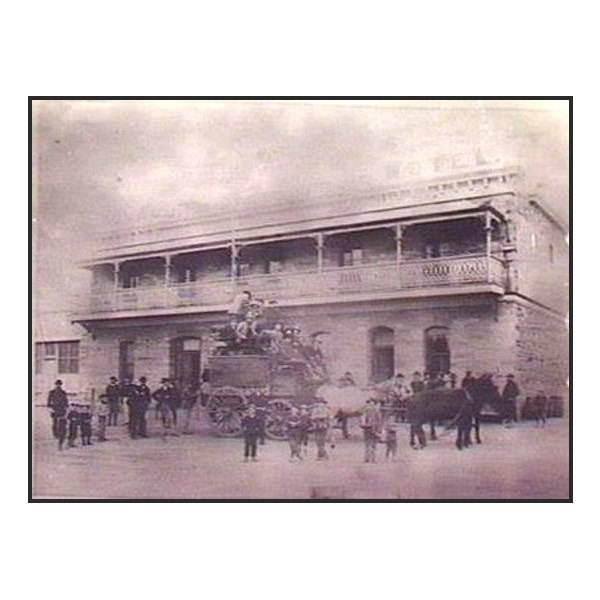
Royal Hotel, Terowie 1884

Terowie Post Office 1901
The town of
Terowie was founded as a private venture around 1875 by John A.
Mitchell (died ca. May 1879), who built a public house (highly profitable due to its proximity to the Inkermann
mine) on the main road, and sections were taken up by a blacksmith, a medical practitioner (a Dr. Carter), a store and others. This was in flagrant contravention of the terms of
Mitchell's lease, but received an imprimatur when he facilitated building of a Wesleyan chapel. By the end of 1875 it consisted of seven houses in a row. In 1877 an area of "wasteland" to the east across the road was nominated by the Government as the site of a town named "Shebbear". (perhaps named after Shebbear, Devon). This was objected to by interests in
Terowie and nearby Yarcowie, which was anxious for any development to be there. Eventually lots were offered for sale at "Shebbear", but the name was scarcely used outside the context of proposed land sales, and all references to the future railway used "Terowie". By 1880 there were two stores, two butchers', a
bakery, a saddlery, a bootmaker, three blacksmiths', the hotel (now run by Eglington) and another under construction, two chapels, an Institute (but as yet no
Post Office or
Police Station ) and the railway station. The line south was completed on 11 October 1880.
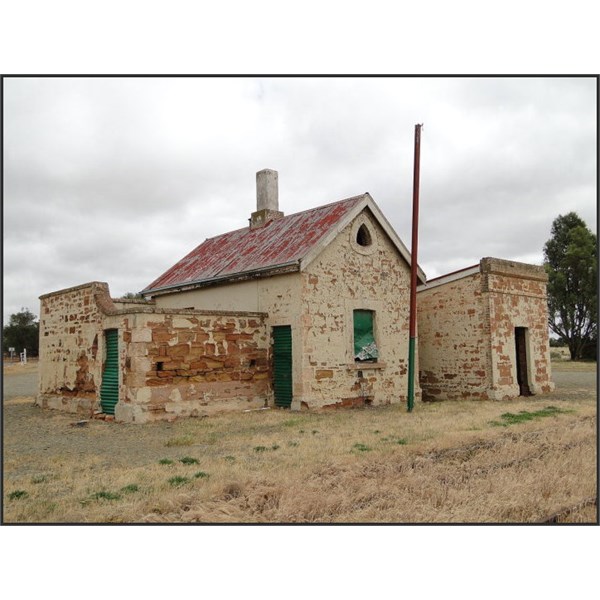
A portion of the remains of Terowie railway station

LNER 4472 Monument at Terowie
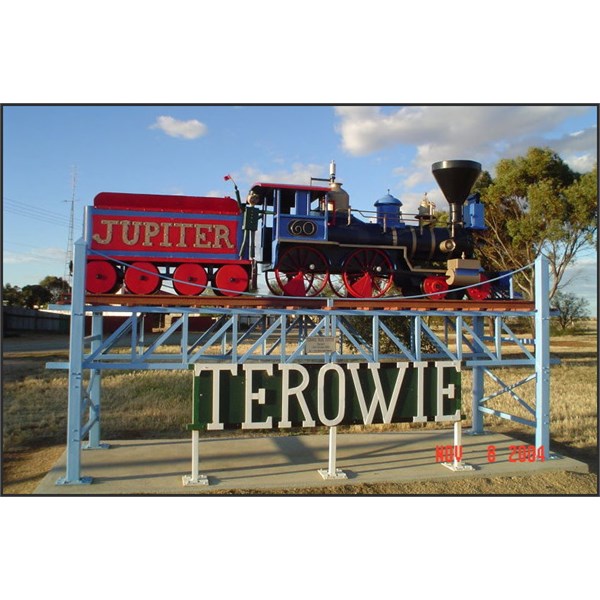
Train Monument at Terowie 1

Country Womens Association Terowie
's initial raison d'être was to serve as a transport hub for the late 19th-century pastoral settlement of the north-east of the State. The broad gauge line from the south (via
Burra) ended at
Terowie. Soon a narrow gauge line continued 20 km north to
Peterborough, where lines from
Perth,
Alice Springs,
Broken Hill and later
Sydney met. Thus
Terowie functioned for decades as the transshipment point at the railway break-of-gauge.
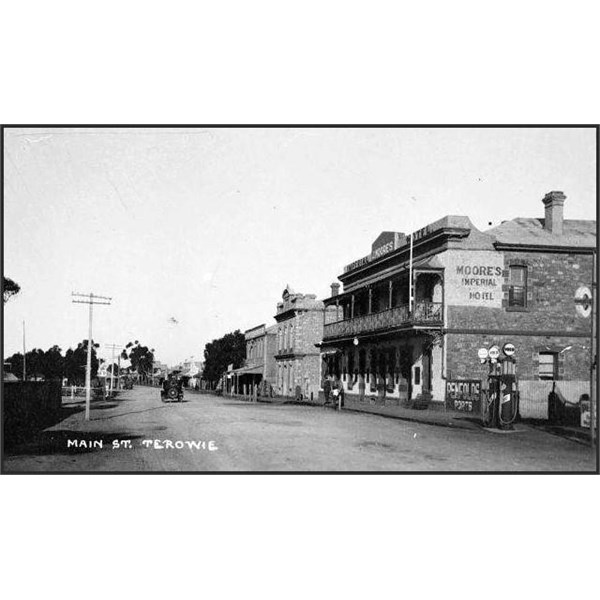
Imperial Hotel ,Terowie 1938
![Imperial Hotel , Terowie [Closed]](https://cdn.exploroz.com/images/forum/uploads/72151_445__TN600F.jpg?gid=136145)
Imperial Hotel , Terowie [Closed]
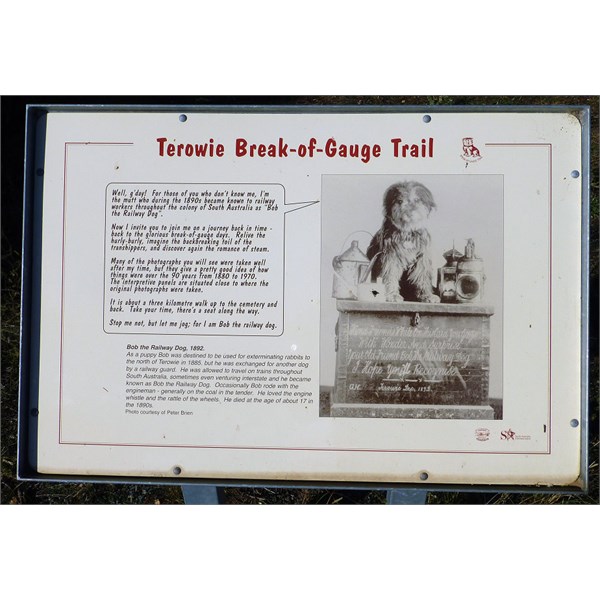
Bob the Railway Dog 1892

Terowie Railway yard , approx' late 30's 1940's
The broad gauge line was extended from
Terowie to
Peterborough in the 1970s, and
Terowie went from a thriving township into something of a perfectly preserved ghost-town. The railway line was closed and removed in the early 1990s; many relics remain and have been
well preserved in the Museum and the Walking Trail.
When in 1898 the town hosted a busy break of gauge its
population was about 800–900 people, many of whom worked on the railways.
The town was home to a busy staging
camp during World War II, due to the break-of-gauge for the busy railway traffic going to
Alice Springs and thus much of northern Australia.
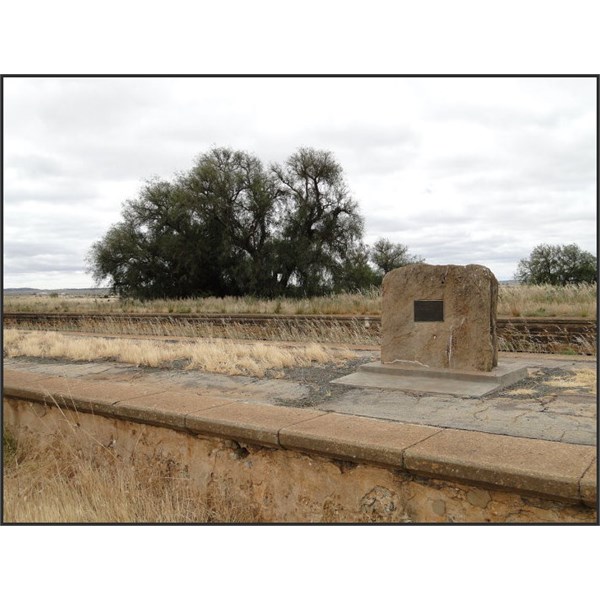
McArthur monument Terowie
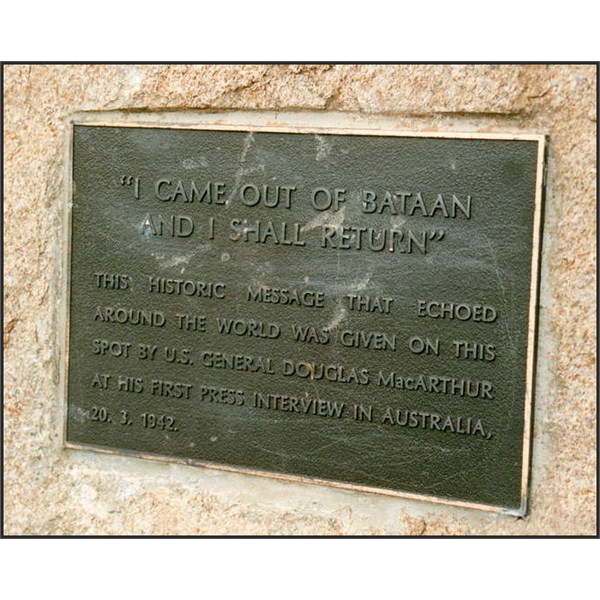
'I came out of Bataan and I shall return'
The
Terowie Railway Station had its moment of fame when General Douglas
MacArthur held his first press conference in Australia on his retreat from the Pacific on 20th March 1942 whilst transferring trains in
Terowie on 20 March 1942, He made his famous speech regarding the Battle of the Philippines in which he said: "I came out of Bataan and I shall return". The event is commemorated by a
plaque on the now disused railway platform , The railway yards and work shops then stretched 3Kms along the line.
.